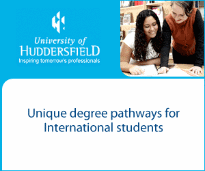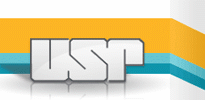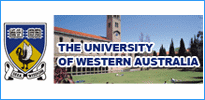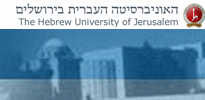North Korea: North Korea Education Profile 2012
2012/03/22
North Korea Education Profile 2012
Education in the Democratic People's Republic of Korea (DPRK) is strictly controlled by the government. Children go through one year of kindergarten, four years of primary education, six years of secondary education, and then on to universities. Two notable universities in the DPRK are the Kim Il-sung University and Pyongyang University of Science and Technology, both in Pyongyang.
Primary and secondary education
In the early 1990s, the compulsory primary and secondary education system was divided into one year of kindergarten, four years of primary school (people's school) for ages six to nine, and six years of senior middle school (secondary school) for ages ten to fifteen) (see fig. 5). There are two years of kindergarten, for children aged four to six; only the second year (upper level kindergarten) is compulsory.
In the mid-1980s, there were 9,530 primary and secondary schools. After graduating from people's school, students enter either a regular secondary school or a special secondary school that concentrates on music, art, or foreign languages. These schools teach both their specialties and general subjects. The Mangyngdae Revolutionary Institute is an important special school.
In the early 1990s, graduation from the compulsory education system occurred at age sixteen. Eberstadt and Banister report that according to North Korean statistics released in the late 1980s, primary schools enrolled 1.49 million children in 1987; senior middle schools enrolled 2.66 million that same year. A comparison with the total number of children and youths in these age brackets shows that 96 percent of the age cohort is enrolled in the primary and secondary educational system.
School curricula in the early 1990s are balanced between academic and political subject matter. According to South Korean scholar Park Youngsoon, subjects such as Korean language, mathematics, physical education, drawing, and music constitute the bulk of instruction in people's schools; more than 8 percent of instruction is devoted to the "Great Kim Il Sung" and "Communist Morality." In senior middle schools, politically oriented subjects, including the "Great Kim Il Sung" and "Communist Morality" as well as "Communist Party Policy," comprise only 5.8 percent of instruction. However, such statistics understate the political nature of primary and secondary education. Textbooks in the Korean language, for example, include titles such as We Pray for "Our Master," Following Mrs. Kim, Our Father, Love of Our Father, and Kim Jong Il Looking at Photos. Kindergarten children receive instruction in "Marshal Kim's Childhood" and "Communist Morality." Park noted that when students read Kim Il Sung's writings in the classroom, they are expected to do so "loudly, and slowly and with a feeling of respect." They also are taught a special way of speaking toward Kim, in terms of pronunciation, speed, and a special deference system and attitude."
Social education
Outside the formal structure of schools and classrooms is the extremely important "social education." This education includes not only extracurricular activities but also family life and the broadest range of human relationships within society. There is great sensitivity to the influence of the social environment on the growing child and its role in the development of his or her character. The ideal of social education is to provide a carefully controlled environment in which children are insulated from bad or unplanned influences. According to a North Korean official interviewed in 1990, "School education is not enough to turn the rising generation into men of knowledge, virtue, and physical fitness. After school, our children have many spare hours. So it's important to efficiently organize their afterschool education."
In his 1977 "Theses on Socialist Education," Kim Il Sung described the components of social education. In the Pioneer Corps and the Socialist Working Youth League (SWYL), young people learn the nature of collective and organizational life; some prepare for membership in the Korean Workers' Party. In students' and schoolchildren's halls and palaces, managed by the SWYL Central Committee, young people participate in many extracurricular activities after school. There also are cultural facilities such as libraries and museums, monuments and historical sites of the Korean revolution, and the mass media dedicated to serving the goals of social education. Huge, lavishly appointed "schoolchildren's palaces" with gymnasiums and theaters have been built in P'yongyang, Mangyngdae, and other sites. These palaces provide political lectures and seminars, debating contests, poetry recitals, and scientific forums. The Students' and Children's Palace in P'yongyang attracted some 10,000 children daily in the early 1990s.
Although North Korean children would not seem to have much time to spend at home, the family's status as the "basic unit" of society also makes it a focus of social education. According to a North Korean publication, when "homes are made revolutionary," parents are "frugal . . . courteous, exemplary in social and political life," and children have proper role models.
Higher education
Institutions of higher education include colleges and universities; teachers' training colleges, with a four-year course for preparing kindergarten, primary, and secondary instructors; colleges of advanced technology with two or three-year courses; medical schools with six-year courses; special colleges for science and engineering, art, music, and foreign languages; and military colleges and academies. Kim Il Sung's report to the Sixth Party Congress of the KWP in October 1980 revealed that there were 170 "higher learning institutions" and 480 "higher specialized schools" that year. In 1987 there were 220,000 students attending two- or three-year higher specialized schools and 301,000 students attending four- to sixyear colleges and university courses. According to Eberstadt and Banister, 13.7 percent of the population sixteen years of age or older was attending, or had graduated from, institutions of higher education in 1987-88. In 1988 the regime surpassed its target of producing "an army of 1.3 million intellectuals," graduates of higher education, a major step in the direction of achieving the often-stated goal of "intellectualization of the whole society."
Kim Il Sung University, founded in October 1946, is the country's only comprehensive institution of higher education offering bachelor's, master's, and doctoral degrees. It is an elite institution whose enrollment of 16,000 full- and part-time students in the early 1990s occupies, in the words of one observer, the "pinnacle of the North Korean educational and social system." Competition for admission to its faculties is intense. According to a Korean-American scholar who visited the university in the early 1980s, only one student is admitted out of every five or six applicants. An important criterion for admission is senior middle school grades, although political criteria are also major factors in selection. A person wishing to gain acceptance to any institution of higher education has to be nominated by the local "college recommendation committee" before approval by county- and provincial-level committees.
Kim Il-Sung University's colleges and faculties include economics, history, philosophy, law, foreign languages and literature, geography, physics, mathematics, chemistry, atomic energy, biology, and computer science. There are about 3,000 faculty members, including teaching and research staff. All facilities are located on a modern, high-rise campus in the northern part of P'yongyang.
Pyongyang University of Science and Technology (PUST), scheduled to open in 2008, is the country's only joint venture institute of higher learning, founded, funded and operated by groups and people from both North and South Korea, as well as China and the USA. It will accept around 200 Master and PhD level students annually, from both Koreas, and with faculty hired from top universities and research institutes abroad. At this university, courses will be taught in Korean and English.
The Pyongyang Business School also offer short courses given by foreign lecturers, with a MBA to be offer in the future.
Adult education
Because of the emphasis on the continued education of all members of society, adult or work-study education is actively supported. Practically everyone in the country participates in some educational activity, usually in the form of "small study groups." In the 1980s, the adult literacy rate was estimated at 99 percent.
In the early 1990s, people in rural areas were organized into "five-family teams." These teams have educational and surveillance functions; the teams are the responsibility of a schoolteacher or other intellectual, each one being in charge of several such teams. Office and factory workers have two-hour "study sessions" after work each day on both political and technical subjects.
Adult education institutions in the early 1990s include "factory colleges," which teach workers new skills and techniques without forcing them to quit their jobs. Students work part-time, study in the evening, or take short intensive courses, leaving their workplaces for only a month or so. There also are "farm colleges," where rural workers can study to become engineers and assistant engineers, and a system of correspondence courses. For workers and peasants who are unable to receive regular school education, there are "laborers' schools" and "laborers' senior middle schools," although in the early 1990s these had become less important with the introduction of compulsory eleven-year education.
- North Korea News
-
- NORTH KOREA: North Korea detains Russian yacht in neutral waters
- CHINA: China halts cash flow to North Korea
- CHINA: Asian Markets Retreat After Oil Prices Fall Again
- AFGHANISTAN: Global growth will be disappointing in 2016: IMF's Lagarde
- AFGHANISTAN: Revised IMF forecasts signal gloom on global economic outlook
- AFGHANISTAN: Oxfam Study Finds Richest 1% Is Likely to Control Half of Global Wealth by 2016
- Trending Articles
-
- KENYA: Kenya's tea industry moves toward strategic diversification
- CHINA: Forty-six Chinese-owned companies registered in Guinea-Bissau
- GHANA: Ghana steps up to secure electricity supply
- TUNISIA: Tunisia augments ICT exports and connectivity
- INDIA: Indian central bank chief to step down in surprise move
- NIGERIA: Nigeria’s e-commerce industry shows growth potential


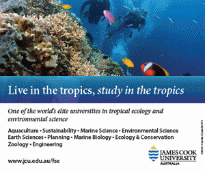

.gif?1356023993)
